Intel Insiders to Advise Intel on Social Media Strategies

You've heard of Intel Inside, the now legendary marketing program that intelligently convinced consumers to make purchasing decisions based on the chip that powered their PCs. Now, I'm proud to introduce the new Intel Insiders program, a new initiative that extends the company's genuine intention of reaching and engaging with people, while freely trusting the brand's future to the very people who can and will shape it.
Not only am I proud to introduce the Intel Insiders program, I'm also humbled to actually be part of the team of advisers to Intel on all things Social Media.
Let this serve as a working standard for other businesses to follow. It's no longer a matter of if, but when. And time isn't slowing for anyone.
The "Intel Insiders" include:
Justin Ezarik, ijustin
Cathy Brooks, Seesmic
Christina Perry, SF Beta, SNAP Summit
Sarah Austin, Pop17
Frank Gruber, Somewhat Frank
J.D. Lasica, Darknet
Tom Foremski, Silicon Valley Watcher
Brian Solis, PR 2.0 and bub.blicio.us
We join existing in house Social Media strategists, Chris Heuer and Ken Kaplan.
First, I applaud Intel and the people leading this initiative to embrace social media and intentionally place its technology and reputation into the court of public opinion. Intel is is not an emerging brand by any means. It's a publicly traded, globally influential powerhouse. It could be very easy for Intel to disregard socialized media and rely on a top-down targeted messaging campaign to steer its brand through broadcast distribution channels. It's what big business knows and practices day in and day out.
But, Intel learned a painful and valuable lesson during the early days of Web 1.0 with the release of its Pentium processors.
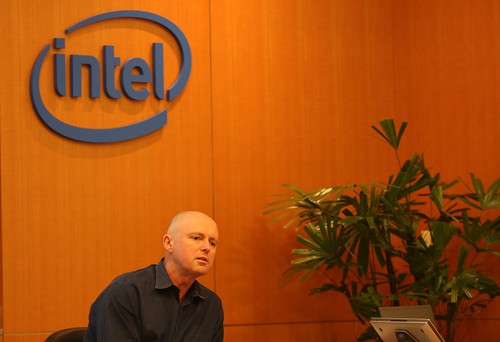
Sean Maloney, Executive Vice President, General Manager, Sales and Marketing Group
Chief Sales and Marketing Officer at Intel explained his experience with us, "Someone posted online that there was something wrong with the product. We didn't grow up online, nobody did - apart from bulletin boards. But, no matter what we did or what we said, we were unable to stop it or keep up with it."
We're talking about the early days of community-powered influence. During the days of The Well and the emergence of services such as Yahoo Groups, everyday people were building what would eventually evolve into powerful, market and policy-changing interest groups. It was during these years when I was inspired to explore the foundation for PR 2.0.
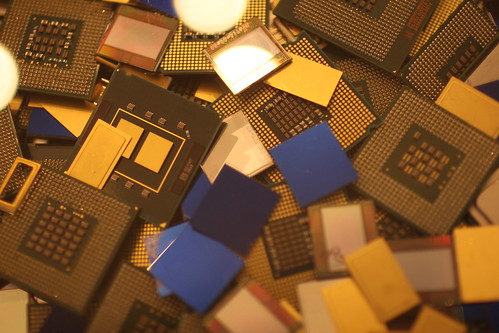
Maloney continued, "I set up our Intel presence online, and in the period of about six-to-eight weeks, we dealt with this constant firestorm of online messages. It was an early lesson that, it's not what you say about you, it's what they say about you. Which really is the social spirit of the Web. It's not what commercial companies says about themselves, it's what everybody says. And, that lesson has sunk through the industry over the years and it's still happening."
Truthfully, this is how most companies are going to learn how to embrace and participate in the social web - out of necessity and usually in the form of crises communication and response.
Sean Maloney and team isn't just stopping with the formation of an advisory board for social strategies. The company is moving nearly all of its advertising and attention away from TV and traditional media into online marketing - and have been shifting money over the last year.
We're talking about the number two executive at the world's largest chipmaker here. And, he sat down with us to genuinely share his mistakes and his aspirations for truly building meaningful relationships online.

Maloney shared his reasons for why we were there, "Where we are today...like everyone else, we've gone for years and years of learning and making mistakes online. About a year ago, we realized that we were wasting our broadcast money. Over the years, the penetration rate of TV ads has continued to drop lower and lower. There's just too much going on [to compete for attention]. So we're taking hundreds of millions of dollars online, and at that level you have to be incredibly involved at a granular level looking at what works, what doesn't work, and how to spend it. That takes you to the social web. As a company, how do you play in that? What's the correct thing to do to be accepted, listened to, influenced? Personally I feel like we're walking in the fog...hopefully you can point us through that fog."
The right social media experts indeed are beacons and lighthouses for navigating intelligently, genuinely, and gracefully through these times where vision and visibility can be greatly impaired and clouded. The Intel Insiders program is also an extension of the Intel voice and spirit and we're free to share insight and information internally and externally, our way...and I believe they'll truly listen.
Intel gets it. They're not rushing into social media blindly. As the company celebrates its 40th anniversary, Intel is strategically observing, listening, and learning. They're also participating. But, they're looking to increase presence online and spotlight innovation, while humanizing the company across the fragmented silos and communities that define the social landscape. It's no easy task, and it will take a whole lot more than blogging, sending tweets, or creating profiles in social networks.
It all starts with listening.
Fellow Intel Insider Tom Foremski captured it well, "I like the calculated risks that Intel is taking by involving some of the top names in the blogosphere and not imposing any restrictions on what we write about. What I like about the Intel Insider program is that it's innovative but it's not about technology -- even though Intel's business is all about innovation in technology."
I'm forever a student of new and socialized media, the sociology that cultivates and shapes online communities, and the dynamics that foster personal brands and relationships. As I recently shared in The Art of Conversation, "We all purport to be social media experts these days, yet most of us are truly students. Many of us overlook some of the most rudimentary elements that define and inspire the socialization of content, especially the social sciences involved with observing the culture, behavior, and conversations within online societies."
As Maloney emphasized, "It's not what you say about you, it's what they say about you."
He's right and it's usually this small, but critical consciousness and inflection point that most companies fail to breath in, accept and embody.
The way I view it...
It’s what you say about you, what they hear, how they share that story, and how you weave that insight into future conversations.
Follow the Intel Insiders on Twitter.
Pictures from the inaugural Insider meeting are on flickr.
Related:
The Essential Guide to Social Media.
The Social Media Manifesto
Cultural Voyeurism and Social Media
Customer Service, The Art of Listening and Engagement Through Social Media
Connect with me on Twitter, Jaiku, LinkedIn, Tumblr, Pownce, Plaxo, FriendFeed, or Facebook.
social media expert manifesto blog blogger ijustine sean+maloney tom+foremski social+media social+media+expert guide ebook pr public+relations brian solis brian+solis pr2.0 pr+2.0 2.0 guru intel intel+insider insider inside media+2.0 media2.0 branding socialmedia promotion publicity brand marcomm marcom communication


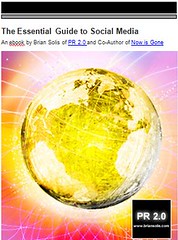

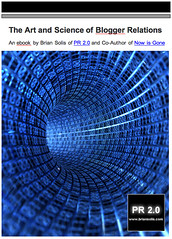
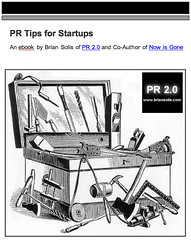
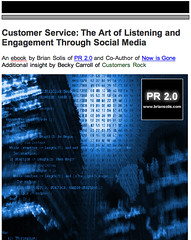





2 Comments:
Hi Brian, congrats on being part of this team and thanks for connecting on Facebook where I saw your posted link about this. In South Africa this stuff is all still very new for us and we are all testing the waters with some of the bigger media companies and corporations having appointed Social Media Strategists and Managers, but it is instructive to have the big guys to learn from and this kind of helps to prove the point
Like I can now point to this and say to clients "Oh, look, I'm friends with this guy on Facebook and I learn from what they do and we don't have to ape these strategies, but use them as guidelines to formulate our own methodology and rationale for doing the 'social media' thing"
Regards
Mario Olckers, South Africa
Hm, Brian, gender changes all around? Justin(e), Christi(a)n(a)...
:-)
Post a Comment
<< Home